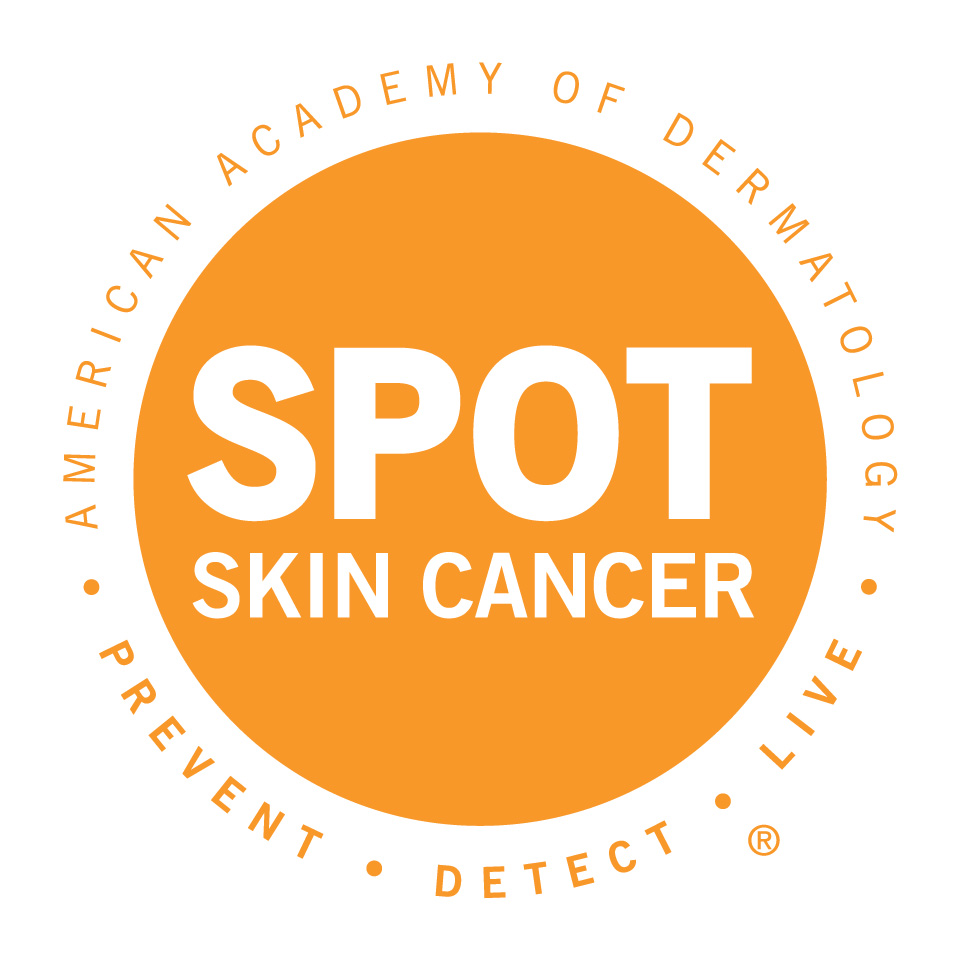The American Academy of Dermatology has designated May as National Melanoma Skin Cancer Prevention Month and Peraza Dermatology Group is committed to raising awareness about skin cancer so that we can increase the chances of early detection in all of our patients. One in 50 people will develop melanoma in their lifetime which is why early detection of this cancer, and all skin cancer types, can help save the life of you or your loved ones.
What is Melanoma:
Melanoma is a cancer in the melanocytes, or pigment producing cells, in the skin. Often other types of skin cancer do not spread, but melanoma can spread around the body, or metastasize. Skin cancer is the most common form of cancer in the United States, and it is estimated that one person dies from melanoma every hour. Melanoma is often caused by exposure to high levels of sunlight and most frequently appears on the trunk in men and on the legs in women; however it can occur anywhere on the body. Moles can become malignant (cancerous) years after the skin has been burnt. Children or teenagers who have had one or more blistering sunburns are at risk for developing skin cancer many years later. Therefore, we stress most of our patients to have yearly skin checks. It is crucial that skin cancers are treated early, as later stage treatments are typically not effective.
Peraza Dermatology Group strives to decrease your risk of developing melanoma and to help you recognize if you are at risk. Peraza Dermatology Group will provide you with strategies to be more vigilant for your skin health and decrease your risk of skin cancer.
Facts:
- Melanoma accounts for less than 5% of skin cancers but is the cause of the majority of skin cancer deaths.
- One person dies every hour from melanoma.
- One or more blistering sunburns in childhood doubles your lifetime melanoma risk.
- One session of indoor tanning increases your lifetime melanoma risk by 20%.
- All skin types are at risk for melanoma.
- The survival rate of melanoma that is detected early with no spread to other areas of the body is 98% in the United States.
Preventing Melanoma:
The good news is that melanoma is highly preventable if we follow some simple rules:
- Do not use indoor tanning beds.
- Do not let your skin burn.
- Use a broad spectrum sunscreen SPF 30 or higher, to all exposed areas daily.
- Avoid peak hours of sun exposure between 10:00 am and 2:00 pm.
- Check your skin monthly and look for the ABCDEs of melanoma:
- Asymmetry – One half unlike the other half.

- Border – The edges of an early melanoma tend to be irregular, uneven, or poorly defined.

- Color – Healthy moles are uniform in color. A concerning mole has color that is varied from one area to the other. Shades of tan and brown, black, white, red, or blue are concerning.

- Diameter – Melanomas are usually larger in diameter than a pencil eraser, although they can be smaller.

- Evolving – When a mole changes in size, shape, color, begins to bleed or scab, or looks different from other moles on your body, this raises concern.
If you believe you have identified any of the following risk factors, please contact our office to set up an appointment.
We encourage all of our patients to protect their skin from the sun’s ultraviolet rays and to check often for any signs of skin cancer. If you have a suspicious mole, call us today to schedule an appointment at any one of our four office locations and remember that we encourage our patients to see a dermatologist once a year for a full skin check.


